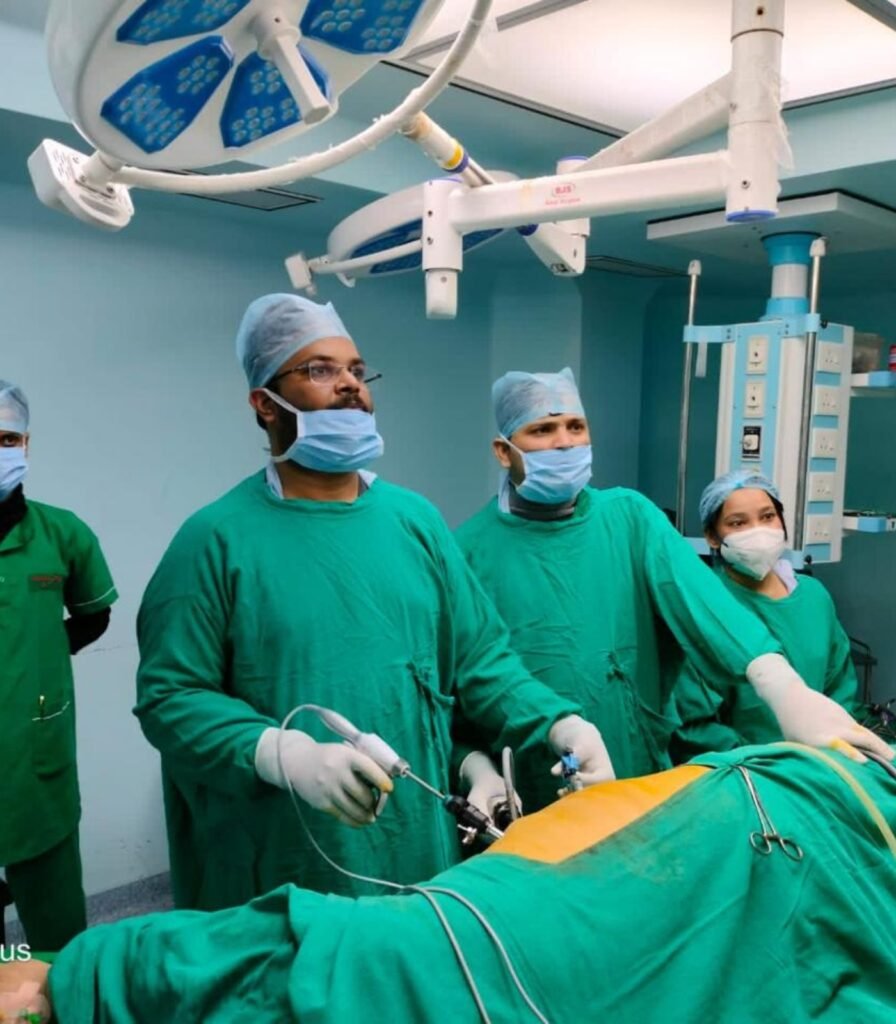What Is the Treatment for Glanular Hypospadias?
Glanular hypospadias is a type of congenital condition where the urethral opening is in the head of the penis. The treatment for glandular hypospadias typically involves surgery, which is usually performed between 6-12 months of age. The surgery involves straightening the penis, reconstructing the urethra, and performing a circumcision. Some types of glandular hypospadias may require more than one surgery. After surgery, the child may be prescribed antibiotics to prevent infection and an antispasmodic medication to suppress muscle spasms.
What Are the Complications of Glandular Hypospadias?
Complications of glandular hypospadias include urethrocutaneous fistula, urethral stricture, urethral diverticulum, and recurrent curvature. A urethrocutaneous fistula is a hole between the urethra and the outer skin of the penis, causing urine to exit the body at the wrong location.
A urethral stricture is a narrowing of the urethra caused by scarring, making urination difficult and leading to abnormal urine stream direction. A urethral diverticulum is a widening of the urethra near the repair area, causing urine to gather and potentially leading to urinary tract infections. Recurrent curvature is a re-curving of the penis after hypospadias repair.
- Opening location: Glandular hypospadias typically involves an opening near the head of the penis.
- Pyuria: This is a condition where there is pus in the urine causing a burning sensation while urinating. It is a common complication of hypospadias.
- Obstructive urethral strictures: Urethral strictures, or narrowing of the urethra, are more common in patients with hypospadias and can lead to urinary symptoms such as pain or inability to empty the bladder completely.
- Fistulas: Fistulas are common, painful channels that form between the skin and the urinary tract. They can develop after surgery and are open to the skin, which can cause urinary contamination and increase the risk of infection.
- Urethral irritation and continence issues: These are some of the most common complications of hypospadias repair. Patients may experience discomfort and pain in the urinary tract, and urinary tract infections are more common. Incontinence is not as common as it is in distal hypospadias repairs, but it is still possible.
- Phimosis: This is a condition where the foreskin, the skin that covers the head of the penis, is too tight. It can occur in some patients with hypospadias and may require circumcision.
- Anesthesia complications: Anesthesia is used during hypospadias surgery to help manage pain and reduce discomfort. Complications such as aspiration, respiratory depression, and cardiac arrest can occur during and after anesthesia.
- Postoperative bleeding: Bleeding can occur after hypospadias surgery, and it is usually noticed in the first few days. It may require additional intervention such as blood transfusions in severe cases.
- Trauma and scrotal wounds: These can occur if the surgery is not performed properly, and they can be painful and can require wound healing and infection prevention measures.
- Penile relocation: In some rare cases, the hypospadias is so severe that the penis needs to be realigned and positioned differently. This may lead to additional complications such as penile retraction, intolerance to sexual activity, and decreased sexual function.
What Are the Three Types of Hypospadias?
- There are three main types of hypospadias, each depending on the location of the urethral opening:
- Glanular Hypospadias: The opening is on the head of the penis.
- Subcoronal Hypospadias: The opening is just below the head of the penis.
- Distal Hypospadias: The opening is located midway between the head and the middle of the shaft.
- More severe cases of hypospadias can be classified as Midshaft, Penoscrotal, or Perineal Hypospadias.
- Midshaft Hypospadias: The opening is halfway down the side of the penis.
- Penoscrotal Hypospadias: The opening is where the shaft meets the scrotum.
- Perineal Hypospadias: The opening is along the center of the divided scrotum.
Which Type of Hypospadias Needs Surgery?
The types of hypospadias that need surgery are glandular, coronal, penile, and perineal.
Hypospadias is a congenital condition where the urethral opening is not located at the tip of the penis. The type and severity of hypospadias determine whether surgery is necessary. In most cases, hypospadias requires surgery to correct the defect and restore normal urinary function.
There are several types of hypospadias, categorized based on the location of the urethral opening. The types that typically require surgery are:
- Glanular (balanic) hypospadias: Thethral opening is located in the head of the penis, but not at the tip.
- Coronal hypospadias: The urethral opening is located at the base of the glans penis.
- Penile hypospadias: The urethral opening is located along the shaft of the penis.
- Perineal hypospadias: The urethral opening is located on the scrotum or perineum.
Surgery is usually recommended for hypospadias to correct the defect and prevent potential complications, such as urinary tract infections, sexual dysfunction, and psychological distress. The type and complexity of the surgery vary depending on the severity and location of the defect.
In some cases, mild hypospadias may not require surgery, but this decision is made on a case-by-case basis by a healthcare provider or urologist. The goal of surgery is to create a normal urinary stream, improve sexual function, and enhance the overall quality of life for individuals with hypospadias.
What Is the Difference Between Glandular and Coronal Hypospadias?
The table below provides a detailed comparison of Glandular Hypospadias and Coronal Hypadias, two types of hypospadias, highlighting their differences in location, type, effect on urination, surgical correction, incidence, severity, and symptoms.
| Glandular Hypospadias | Coronal Hypospadias |
| Opening of the urethra is located on the head the penis, but not at the tip. | Opening of the urethra is located just below the head of the penis. |
| Milder form of hypospadias | More severe form of hypospadias |
| Does not cause misdirected urinary stream or curvature of the penis | Can cause misdirected urinary stream and curvature the penis |
| Most common form of hypospadias | Less common form of hypospadias |
| Includes distal hypospadias | Includes subcoronal and midshaft hypadias |
| Classified as anterior or minor hypospadias | Classified as midshaft hypospadias |
| Less severe curvature of the penis | More severe curvature of the penis |
What Is the Success Rate of Hypospadias Surgery?
The success rate of Hypospadias Surgery is above 90% as per many recent studies.
According to AlTaweel, Waleed M., et al’s 2017 study ‘Hypospadias repair during adulthood: series’, the overall success rate was 95% with no difference between primary and secondary repair.
According to Uygur, M. Cemil, et al’s 2002 ‘Factors affecting outcome of one-stage anterior hypospadias repair: analysis of cases’, one-stage anterior hypospadias repair was successful in 95% of, with a complication rate of 18%. According to Diao, B., et’s 2006 study ‘Anterior hypadias: one-stage repair. Report of 40 cases, 40 cases of anterior hypospadias were successfully repaired using a one-stage procedure.
How Long Does Hypospadias Surgery Take to Heal?
Hypospadias surgery typically takes around 6 weeks to fully heal. Mild cases may take 60-120 minutes to repair, while more severe cases can take 3 hours or more. After surgery, a urinary catheter is usually needed for 5-14 days, and full healing takes around 6 weeks.
How Long Does Hypospadias Surgery Take?
Hypospadias surgery can take anywhere from 60 minutes to three hours, depending on the severity of the condition. Mild cases may take around 60-120 minutes, while more severe forms can take longer.

If you are concerned about Hypospadias surgery then please consult with the top urologist surgeon in Siliguri, Dr. Samarth Agarwal today!





